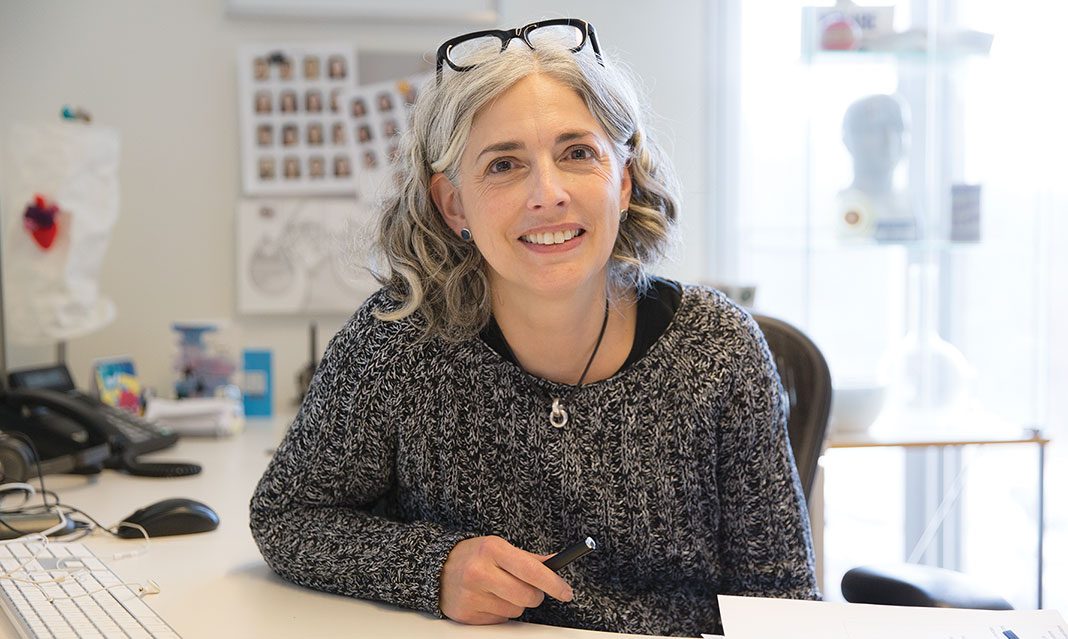UTM is home to several programs, majors, and minors—including the Biomedical Communications program (as both a graduate program and an undergraduate minor). It surprises professor Jodie Jenkinson that not everyone knows about it. In fact, she calls it “UTM’s best kept secret.”
Jenkinson teaches within the Biomedical Communications program, at both the graduate and undergraduate level. However, her plan was never to follow the route to academia. Jenkinson had been interested in arts, illustration, and animation, but she was never happy with the way she was instructed during her undergraduate degree at McMaster University, which had her change her career path. She completed a combined program of French and Art History “in an effort to rescue [her] degree.”
So what made Jenkinson enter the biomedical communications field?
“I started becoming interested in patient education and how to create better visuals that communicate to patients, and I soon discovered this program,” says Jenkinson. “It was actually my doctor who told me about it, because he trained at U of T. He had all those symposia and [was] showing them to me and told me: do you know that there is a program [like this] in U of T? So I enrolled in it, and at that time it was a Bachelor’s of Science program, and while I was in it, it transitioned into a Master’s program, so I was able to complete my Master’s.”
But the reason behind this Masters was not academia, but rather purely patient education to help create visuals and illustrations to allow patients to understand better what they have. Jenkinson’s specific interest was working with male patients who have prostate cancer.
I asked Jenkinson if going into the field was only triggered by speaking to her doctor, but she instead believes that it was her collective experiences that have drove her into that pathway.
“I had a collection of different experiences. It was six years between my undergrad and grad, and that’s a long time. But sometimes I think taking a year off is not a bad idea to help you think about what you want to do. So I worked in an animation studio for a while. I worked for a company called Street Kids International. They also produced animation and they were creating an animation for Mexican Street Kids about the dangers of drugs.”
“It was sort of these collective experiences combined and talking to my doctor because of family illness and wanting patient education, that had me thinking I want to communicate visually about things that are important to people.”
Jenkinson believes that visuals could be one of the best ways to allow people to understand health issues better. In fact, if “[science] literacy is lower than it should be, health literacy is even more than that,” and so visuals could be one of the best ways to communicate with one another.
Today, one of Jenkinson’s main concerns (and thus her research) revolves around providing the proper visuals and illustrations that will allow Life Science students to understand their educational material better. This especially applies to biology and chemistry, since concepts at a molecular level are not always available to the human eye, and visuals instead can help students understand better. Jenkinson looks at different methods of visualization, including interactivity, gaming, or highly complex animations.
Her lab also investigates achieving a better animation through eye tracking, as tracking where the students’ eyes are looking enhances the illustrations and animations for better understanding of the biological material.



